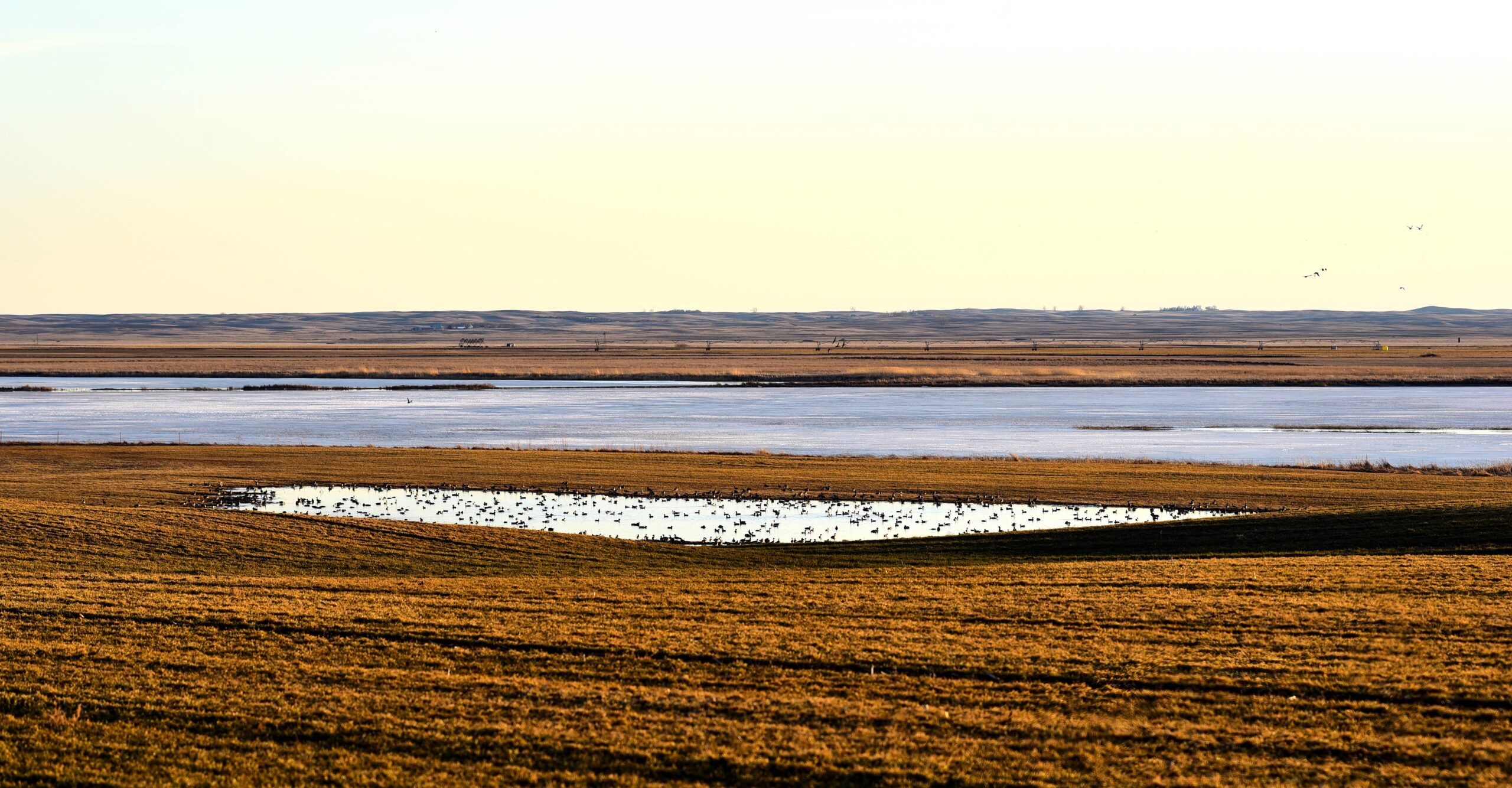“One of the penalties of an ecological education is that one lives alone in a world of wounds.” – Aldo Leopold.
The ecologically educated must have been especially distraught to see the large-scale wetland drainage that occurred throughout Prairie Pothole Region in the period after World War II. The widespread erasure of small wetlands, much of it subsidized by the U.S. Government, had commenced in earnest as land-use practices intensified to increase agricultural production. The U.S. Department of Agriculture estimated that by the early 1960’s, wetland drainage had “benefitted” over 6 million acres in Minnesota, North Dakota, and South Dakota. Fortunately for waterfowl populations and people alike, alarmed wetland and waterfowl enthusiasts spoke up and pressed Congress to act, which it did by amending the Migratory Bird Hunting Stamp Act (i.e., the Duck Stamp Act) on August 1, 1958. This amendment created the Small Wetlands Acquisition Program which empowered the agency that would eventually become the U.S. Fish and Wildlife Service to protect these small wetland and pothole areas through the purchase of both fee-title lands and wetland easements.
Wetland easements are relatively simple agreements and are only purchased from landowners willing to sell them. They restrict the rights to drain, burn, fill, or level wetland areas important for waterfowl production. Protected wetlands can be hayed and grazed without restriction and can even be farmed when dry of natural causes. Lands within the exterior boundary of a wetland easement can also be developed in many ways. For example, roads, houses, and infrastructure are not restricted provided they do not fill or drain a protected wetland. By only encumbering these few rights, wetland easements fit well into many farmers’ operations and strike a balance between wetland conservation and societal needs.
The wetland easement program has been remarkably successful for over 6 decades. To date, the Fish and Wildlife Service has purchased and owns wetland easements on over 1.5 million acres of potholes in MN, MT, ND, and SD and acquisition continues strong today. The reason for the program’s continued popularity is rooted in its minimally restrictive nature. It is not uncommon to learn of a farmer that works a tract of land for years unaware that the parcel is protected by a wetland easement. This is a testament to the easement’s compatibility with agriculture.
Mr. Leopold’s words are as true today as the day they were penned; and while wetland loss due to drainage is less today than it was a half-century ago, it still exists. But hopefully an ecological education also gives us the eyes to see the good that is also occurring across the landscape, and to recognize that many landowners are still investing in their future and the future of generations to follow by ensuring the perpetual conservation of wetlands on their properties.

